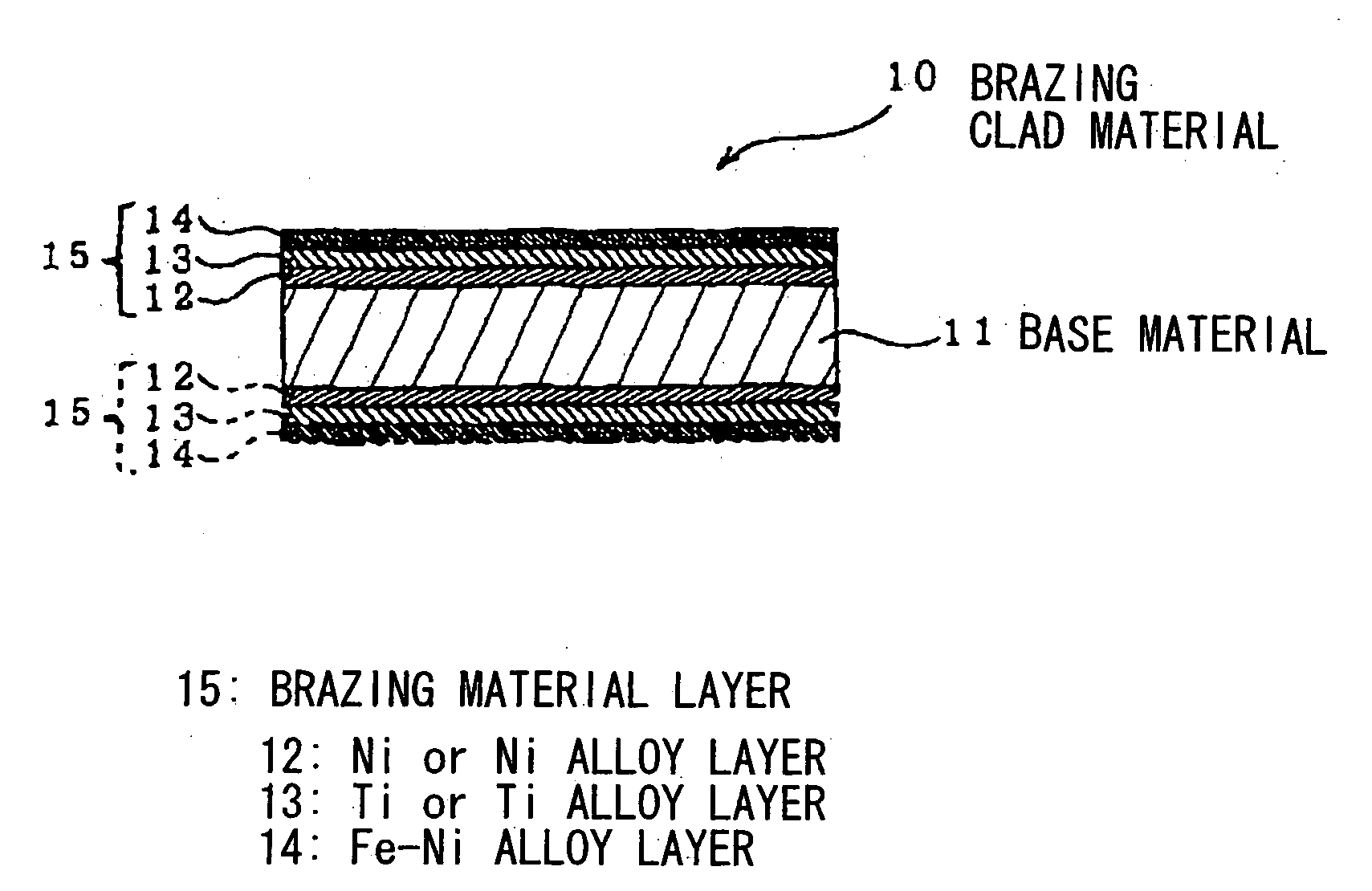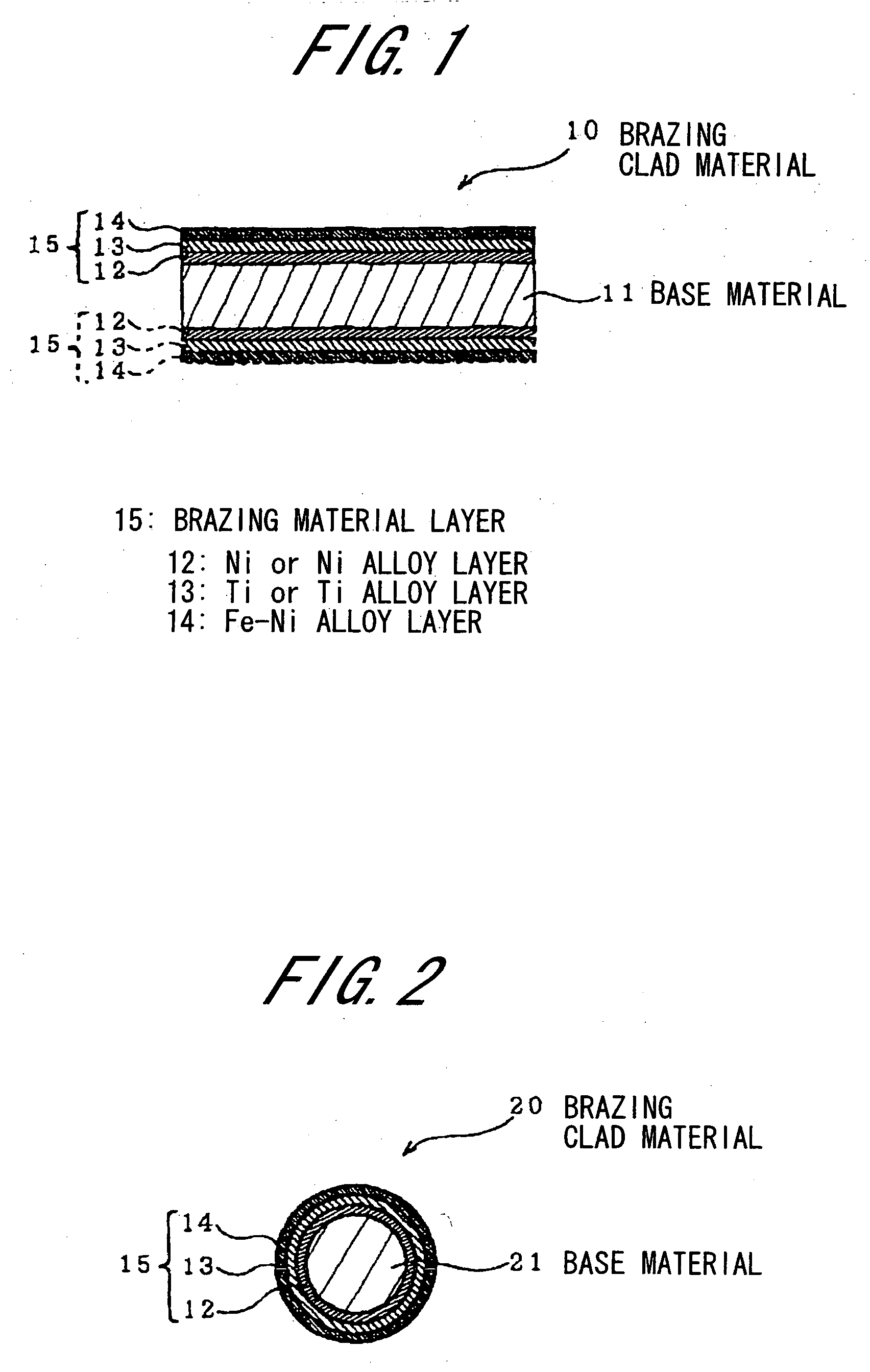Brazing clad material, and brazing method and brazing product using the same
a brazing method and brazing technology, applied in the direction of soldering apparatus, instruments, heat measurement, etc., can solve the problems of insufficient corrosion resistance of the brazing material, i.e., the copper material, and the thickness decrease, so as to reduce the erosion of the base material, prevent the reduction of strength, and improve the quality of the product.
- Summary
- Abstract
- Description
- Claims
- Application Information
AI Technical Summary
Benefits of technology
Problems solved by technology
Method used
Image
Examples
example 1-3
[0072] A composite material is made such that a 0.38 mm thick Ni strip, a 1.0 mm thick Ti strip and a 0.96 mm thick invar (registered trademark) strip are stacked sequentially on the surface of a stainless steel strip (i.e., a SUS304 strip) as a base material, and then they are cladded by rolling. Then, in the same manner as Example 1-1, a brazing clad material is made. The Fe concentration in the entire brazing material layer is set to be 32 wt %.
[0073] The brazing clad material is thermally treated like Example 1-1. Thereupon, brazing properties thereof are evaluated.
example 1-4
[0074] A composite material is made such that a 0.55 mm thick Ni strip, a 1.0 mm thick Ti strip and a 1.16 mm thick invar (registered trademark) strip are stacked sequentially on the surface of a stainless steel strip (i.e., a SUS304 strip) as a base material, and then they are cladded by rolling. Then, in the same manner as Example 1-1, a brazing clad material is made. The Fe concentration in the entire brazing material layer is set to be 32 wt %.
[0075] The brazing clad material is thermally treated like Example 1-1. Thereupon, brazing properties thereof are evaluated.
example 1-5
[0076] A composite material is made such that a 0.33 mm thick Ni strip, a 1.0 mm thick Ti strip and a 1.11 mm thick 42 alloy strip are stacked sequentially on the surface of a stainless steel strip (i.e., a SUS304 strip) as a base material, and then they are cladded by rolling. Then, in the same manner as Example 1-1, a brazing clad material is made. The Fe concentration in the entire brazing material layer is set to be 32 wt %.
[0077] The brazing clad material is thermally treated like Example 1-1. Thereupon, brazing properties thereof are evaluated.
PUM
| Property | Measurement | Unit |
|---|---|---|
| thickness | aaaaa | aaaaa |
| temperature | aaaaa | aaaaa |
| temperature | aaaaa | aaaaa |
Abstract
Description
Claims
Application Information
 Login to View More
Login to View More - R&D
- Intellectual Property
- Life Sciences
- Materials
- Tech Scout
- Unparalleled Data Quality
- Higher Quality Content
- 60% Fewer Hallucinations
Browse by: Latest US Patents, China's latest patents, Technical Efficacy Thesaurus, Application Domain, Technology Topic, Popular Technical Reports.
© 2025 PatSnap. All rights reserved.Legal|Privacy policy|Modern Slavery Act Transparency Statement|Sitemap|About US| Contact US: help@patsnap.com


